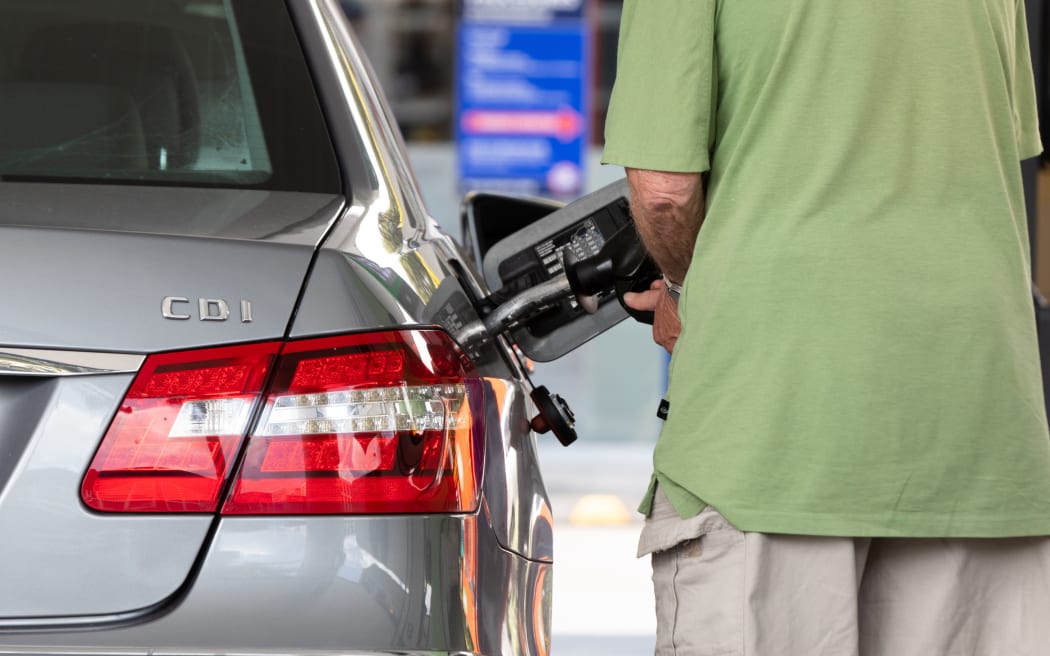Navigation for News Categories
By Brianna Mcilraith of 
The price of petrol is starting to rise again, just one month after the fuel excise duty cut ended. (file image)
Photo: RNZ / Dan Cook
It has been four weeks since the fuel tax excise duty cut came to an end, and fuel prices have been relatively stable – but be warned, they are expected to climb again.
On 1 July, the 15-month-long tax cut, which removed the 25-cent fuel excise duty from petrol prices, was reintroduced at the pump. Including GST, it meant about 29 cents was added back on to fuel prices.
According to fuel comparison app Gaspy, regions had an average increase from anywhere between 20.9c and 29c straight away. Meanwhile, the average price on the West Coast rose only 19.1c.
In Auckland, the average price of petrol had risen by 34.7c since prior to the tax cut ending. In Wellington, it was up 34.6c, Canterbury was up 34.4c and Waikato up 31c.
Prices in Gisborne had remained stable with a 24.2c increase on 1 July, but was only 26.8c more on Friday than it was before the cut ended. Northland had an increase of 21.4c on 1 July but was up only 29.8c on Friday.
Gaspy director Mike Newton said prices were trending ever so slightly downward prior to 1 July and initially that trend continued through to 17 July.
“Since then prices have steadily climbed by about 7c for 91, 95 and 98, while diesel has seen a smaller increase of 5c.
“One explanation for this anomaly is that the fuel companies were, for whatever reason, reluctant to pass on the full excise increase on day one and have gradually ‘topped up’ to the full 29c throughout July.”
AA principal adviser Terry Collins said prices were “heading up”.
“Some interesting price drivers have occurred over the past month.”
First crude oil (Brent) was US$72.51 on 27 June, while a month later it was US$83.87 – a rise of US$11.36. Usually, every dollar a barrel goes up is reflected by a one-cent rise at the pump, he said.
Second was the price of carbon and a recent government decision to backtrack on its decision to keep a tight lid on the carbon price.
Under the Emissions Trading Scheme, big carbon emitters have to pay for every tonne of emissions – one of the government’s major tools for doing its bit on global heating.
Climate Minister James Shaw recommended following the independent Climate Change Commission’s (CCC) advice and letting the price of carbon rise – and stopping pumping extra credits into the market so frequently.
“In brief, following the announcement not to follow the CCC advice, the two carbon unit auctions tanked. Nothing sold and that left a $1b hole in the budget,” Collins said.
In regard to fuel, the unit price then dropped from the mid-US$80s per tonne to as low as about US$35.
That meant the Emissions Trading Scheme input in fuel was 18-20c at mid-US$80s per tonne.
“This dropped down to 10-13c. Now that the government has done a U-turn, the price will leap and so will the contribution on fuel.
“In short, prices are heading up.”
– This story was originally published by Stuff.
Get the RNZ app
for ad-free news and current affairs


>>> Read full article>>>
Copyright for syndicated content belongs to the linked Source : RNZ – https://www.rnz.co.nz/news/business/494733/fuel-prices-look-to-rise-again-one-month-after-fuel-excise-duty-cut-ended































